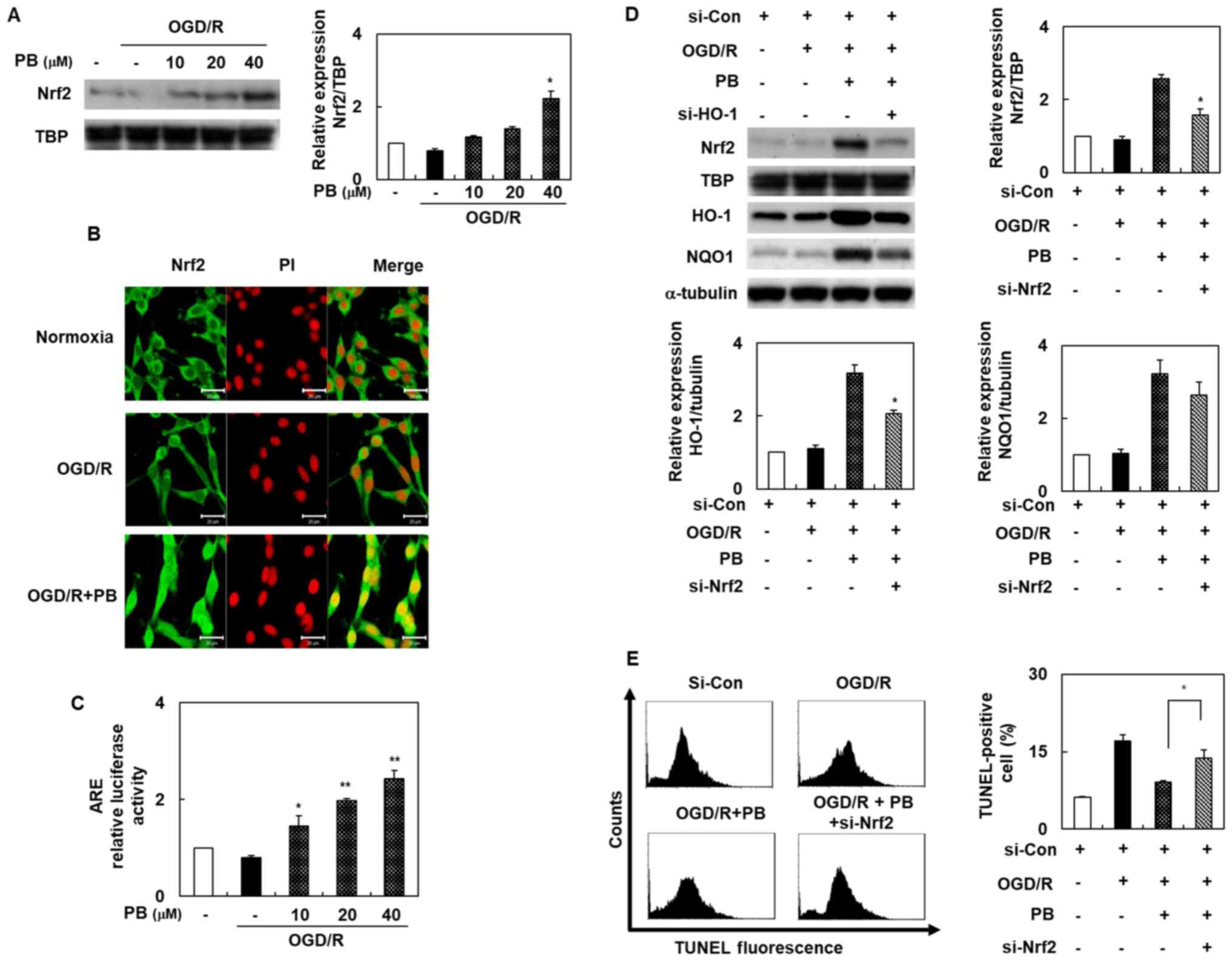Petatewalide B alleviates oxygen‑glucose deprivation/reoxygenation‑induced neuronal injury via activation of the AMPK/Nrf2 signaling pathway
- Authors:
- Published online on: April 16, 2020 https://doi.org/10.3892/mmr.2020.11075
- Pages: 239-246
-
Copyright: © Park et al. This is an open access article distributed under the terms of Creative Commons Attribution License.
Metrics:
Total
Views: 0 (Spandidos Publications: | PMC Statistics:
)
Total PDF Downloads: 0 (Spandidos Publications: | PMC Statistics:
)
Abstract
Neuronal injury is a common, and critical, occurrence in clinical ischemic strokes, and can cause irreversible brain damage. However, the precise pathological mechanisms underlying this condition and effective treatment remain unclear. Increasing evidence shows that the nuclear factor erythroid 2‑related factor 2 (Nrf2)/activated protein kinase (AMPK) signaling pathway serves a significant role in neuronal injury and is involved in neuroprotection. The present study demonstrated that petatewalide B, the active constituent of Petasites japonicus, otherwise known as butterbur, can alleviate oxygen‑glucose deprivation/reoxygenation (OGD/R)‑induced neuronal death via the adenosine monophosphate‑AMPK/glycogen synthase kinase (GSK)‑3/β/Nrf2/antioxidant response element (ARE) signaling pathways in human neuroblastoma SH‑SY5Y cells. A neuronal injury model was established by depriving SH‑SY5Y cells of oxygen and glucose for 8 h, followed by 24 h of reoxygenation (OGD/R). The results indicated that the OGD/R model exhibited reduced cell viability but increased lactate dehydrogenase (LDH) release, reactive oxygen species (ROS) production and apoptosis. These were accompanied by increased levels of cleaved PARP, cleaved caspase‑9, cleaved caspase‑3, p53, Bax and p21, as well as decreased Bcl‑2 levels. Treatment with petatewalide B was able to strengthen cell viability but reduced LDH release, ROS production and the expression levels of apoptosis‑related proteins. Additionally, treatment with petatewalide B activated AMPK in the OGD/R‑exposed SH‑SY5Y cells and upregulated activation of the downstream transcription factor Nrf2, which accompanied heme oxygenase 1 (HO‑1) and NAD(P)H quinone dehydrogenase 1 (NQO1) expression. Furthermore, silencing AMPK, Nrf2, HO‑1 and NQO1 expression inhibited petatewalide B's protective effect against apoptosis in the OGD/R‑exposed SH‑SY5Y cells. Therefore, petatewalide B protected human neuroblastoma cells against OGD/R‑induced injury by downregulating apoptosis and oxidative stress via upregulation of the AMPK/Nrf2 signaling pathway, suggesting that petatewalide B may be a prospective protector against neuronal injury, having possible therapeutic and medical implications.














